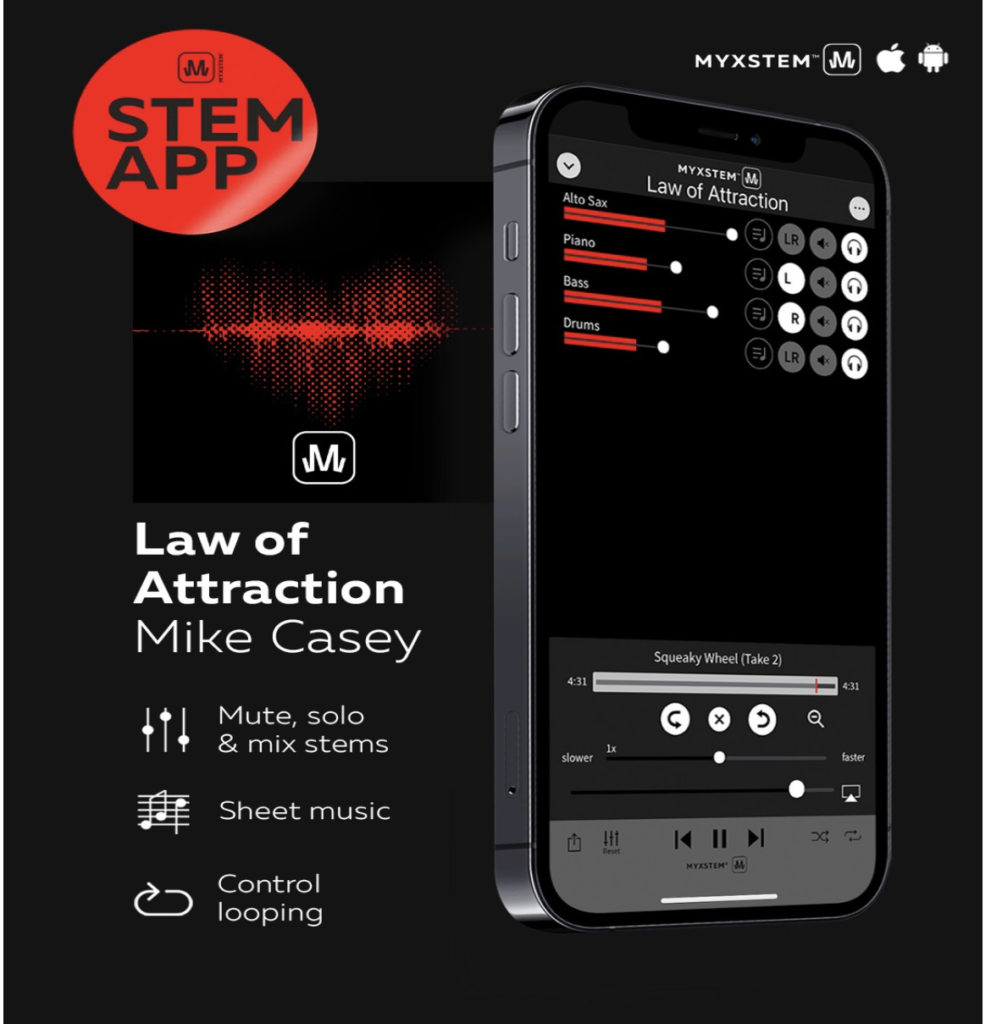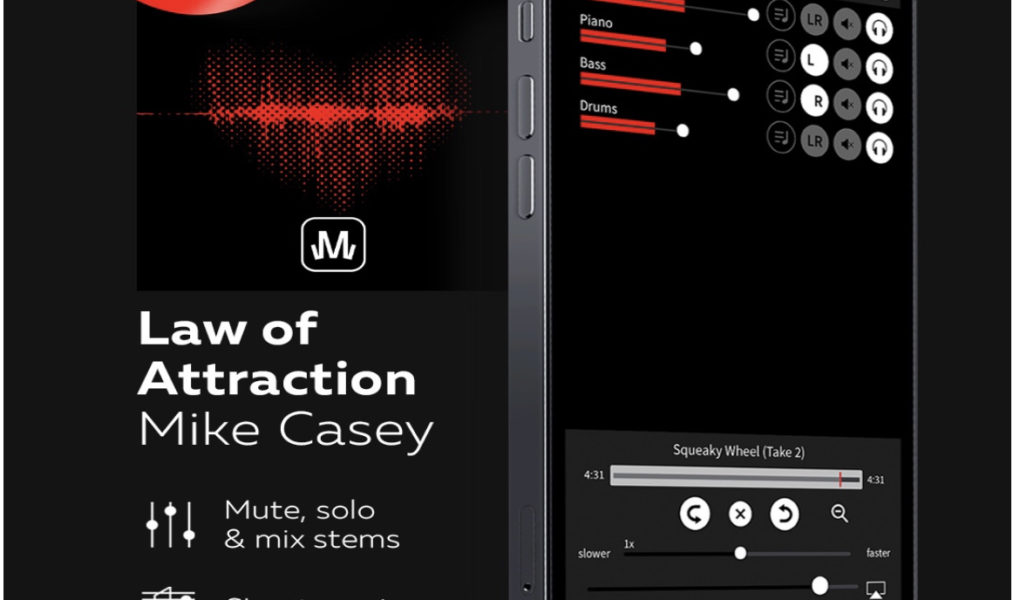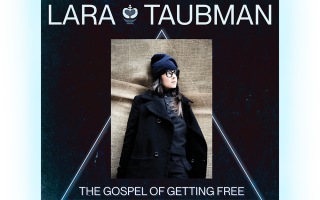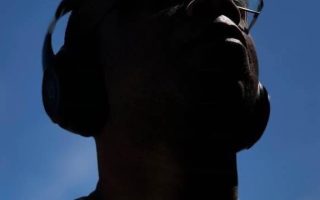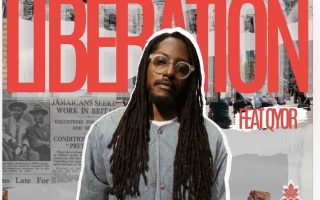US saxophone player Mike Casey’s star has been in rapid ascendance. I have watched him develop as a musician since he and his trio released their first album just over four years ago. An innovative and explorative saxophonist, Casey is always thinking about new ways for people to engage with music and musicians. He has developed an app which allows for a bit of fun, yet also has practical applications, and provides an interesting side-step in the development and interaction of technological progress and music and between those listening to and creating the music.
Starting with his 2020 album ‘Law of Attraction,’ which we covered recently on Platinum Mind as a 2021 remix, Casey has launched his interactive ‘album-as-an-app,’ available for both Apple/iOS and Android/Google Play.
MYXSTEM, around which the app is based, was born in New Orleans and evolved out of an earlier incarnation (FKA Tutti Player) — an award-winning technology that powered music education programs such as Berklee College Music, Jazz at Lincoln Center, and more. Previously Myxstem has released interactive album apps for select Grammy-winning artists such as Christian Scott Atunde Adjuah and Eddie Palmieri.
In 2021, the company rebranded as MYXSTEM, and began releasing on iOS and Android — providing new revenue streams for musicians, offering exceptional educational value, invigorating music catalogues, and encouraging more profound, meaningful fan engagement.
The app works equally well for both tablets and mobile phones and is designed for both, though many users often use it on their phones.
For listeners and fans, the app provides an interactive music experience. You can hear individual lines and put them all, or just some of them, together to create different configurations, making the experience of purchasing an album much more potentially than just listening to the recording, though you can, of course, do that too.
The album itself features musicians including Matt Dwonszyk and Corey Garcia, who make up Casey’s trio, and Benito Gonzales, who is pianist in Pharaoh Sanders’ band for some tracks.
Casey was recently featured by NPR Morning edition, Snapchat, and as the cover of Spotify’s ‘All-New Jazz’ playlist so it is not just his inventiveness with technology that is getting noticed.
I interviewed him about his new venture and his vision for his music. First, being a technophobe in many ways, I asked him to explain how the app works in layman’s terms and what it can do.
Casey replied, “I would encourage anyone reading this to watch the demo video (see link at the end of the piece), demonstrating the app’s features. The app allows you to solo/mute individual instrument stems, loop part of a song, change speed, ( on iOS) and view scores/individual sheet music, all on a phone or tablet. It’s a unique way to dive inside the music in greater detail than one can do on vinyl, CD, or streaming.”
I asked Casey how he came up with the idea. He told me, “My DJ days in high school/early college had me live remixing, mashing up acapellas and instrumentals from different songs together. Since then, I’ve been fascinated by the possibilities with stems – which later tied into my efforts, sampling my own stems to make remixes – e.g. 2021’s ‘Law of Attraction: The Remixes‘ which you reviewed. When I saw this app was possible, I thought it would be the perfect way to bring listeners deeper into the music via how musicians think, listen, and hear music.
To create, we can’t ignore stems or individual instruments; we are deeply engaging with each. Listeners hear the sum of the parts, and while we are also obsessed with getting everything to come together in the best way, musicians are kind of obsessed with each instrument through most of the creation process, whether via composing, producing, recording or mixing. So, this allows the listener to get closer to that via an interactive app. Do you want to slow down or loop the sax instrument stem to hear the specific line in greater detail? Do you want to mute the piano on one particular track to hear what it would have sounded like as a sax/bass/drums trio tune? Mute the sax off an entire record and just listen to the rhythm section as if the sax wasn’t there? Follow along with the sheet music, either as a listener or playing along? If you play one of the instruments, you could learn the album as a challenge and insert yourself into the app. Say you are a drummer; you could mute the drum track and play along as if you were at the session with us. The app allows one to do all of these things! I’ve been searching for something to communicate every tiny detail of my music to listeners for a long time.”
So who could Casey see using this app, and when/where/why?
Casey said, “I can see it being used by music fans as well as musicians. The app offers interactivity for both, but you can also play the album ‘as is,’ so it’s also for a listener who is not a musician. You can listen in your car on the go or at home, plugging it into your speakers. iTunes just redirects to Apple Music now, which makes it hard to buy and sell downloads, so if you want to support what I do, this is an easy way as everyone has the iOS App Store / Android Google Play store on their phone. Plus, I should add that the app’s stems are all the ‘mixed’ stems, pre-mastering (the final sound process where you raise the volume level among other things to be suitable for CD, vinyl, streaming, radio, etc.). That mastering process, while necessary, adds compression, which can be a double-edged sword. So, the app allows you to listen to the album completely ‘unmastered,’ which is not how it sounds on any other format – whether vinyl, CD, streaming, or downloads. Personally to me, from a sound perspective, the album within the app sounds warmer and better to me than it does on CD, downloads, and streaming, which have more compression. Vinyl doesn’t have much compression, so the app is almost like a way to get a digital version of the vinyl sound of the album”.
So, as I understand it, you can do all the above and compare different versions you create using the app to the final product. Reviewers could even use it if they want to hear a particular line in detail. You can build the perfect mix to learn, play- or sing-along for a genuinely immersive, customizable musical experience right on your mobile device, no stem player device or additional platform required. The possibilities, as they say, are endless.
There is more information about the app at the end of the piece, but I also wanted to catch up with Mike Casey the musician and find out what he had planned in the near future and beyond
The ‘Law of Attraction’ album, has had quite a run for a self-released visual album against all odds. It was recorded at Omer Avital’s Brooklyn NYC studio Wilson Live, in 100-degree heat with no air conditioning, headphones, monitors, or studio tricks. It had no label or management support, yet gained features in Huffington Post, Spotify’s ‘Best Jazz of 2020’, Jazz Times, Jazz FM, Jazziz, Pandora, Amazon, Apple Music, Soundcloud, BBC, 3RRR, Radio France, ASCAP, YouTube Music, Vevo, Stingray, legendary jazz A&R Wulf Muller and more. It passed 2.5 million streams across platforms since its release and album tour dates at the Kennedy Center, City of Asylum, Chelsea Music Hall, and The Side Door Jazz Club.
One month before the album’s October 2020 release, Casey and his trio were one of five global bands selected for the biggest ensemble-based competition in jazz – the DC Jazz Festival’s DC Jazz Prix and in April 2021, Casey made history by releasing one of the first, if not the first, studio visual NFT collection for ‘Law of Attraction’, which was featured on the front page of OpenSea, the world’s largest NFT marketplace. The 2021 re-mix album also got reviewed on many respected sites, including Platinum Mind, All Music, Last FM, Independent Music Review and many more.
I asked what was next for Casey and how his success has affected what he envisages happening with his music career? He replied, “I am very eager to get back to touring as I miss it dearly – especially internationally. Covid hit six months after I got back from a year in Valencia, Spain, so I really miss that experience and performing abroad.
I have a few dates coming up that I’m very excited about:
April 21, NYC, at Rockwood Music Hall, April 22, CT, La Grua in Stonington and May 21, Philadelphia, opening for Blue Note artist Makaya McCraven at World Cafe Live
Other than that, I have a few albums in the can waiting to be mixed/mastered/released, so I am working on that while also preparing to go into the studio for two days in late April to record the next album.”
I then asked Casey where he would like to see himself musically ten years from now. He said, “I thrive on inspiration, going with the flow and connecting music to life and vice versa, and not being too bound to any one style.
I think in ten years, I will keep building with my trio (we are already ten years deep as a band as of this year, and our first album was recorded six years in), but I can also see myself expanding to other projects/instrumentations and collaborations.
Lately, I’ve been playing a lot more tenor than alto, but I have one or two albums worth of unrecorded compositions for alto that I’ve meant to get recorded. I love expressing myself differently on each horn and would like to continue to do so in the coming years.
I still roll up to jam sessions mainly on alto since I’ve been playing that way longer than tenor. I know more standards/bebop tunes on alto from practicing that far more as I grew up, and I don’t really have the time to transfer them all to tenor. My main focus at this point is on creating, recording, releasing, and touring my original music, pushing that forward.
During the first 18 months of the pandemic, I also released and began a lot of remote electronic/jazz collaborations, such as ‘Breath In’ (link below), which broke through in a way I wasn’t expecting. It passed a million plays in its first year, which is rare for jazz, even for major label signed artists, and it got a lot of support outside the jazz world – it was even on NPR Morning Edition, out of nowhere!
While it’s not ‘in the moment’ (music created as it is played, or the score varied according to the musician’s ideas) as other forms of jazz, so in a way, I’m reluctant to personally even call it jazz, to be honest, it’s often still too ‘jazz’ to be accepted by curators in other genres, in my experience. I love creating completely ‘in the box’ that way and going nuts with sound design and FX, having grown up with electronic and hip hop production styles in my ear just as much as jazz. I’m currently working on scoring for a Netflix spy show that’s all ‘in the box’ stuff, so maybe I’ll release that in the coming years – who knows? The challenge that I’ve yet to figure out is how do I perform it live if I make a completely ‘in the box’ album? It would be a lot of work to integrate it into a live show that would make sense to me and still sound close-ish to the record from a sound perspective. Maybe it doesn’t have to and could be ‘stripped down’ live. I don’t know. Some promoters are asking me to tour the electronic stuff, so I guess I should try to see if I can figure it out as a fun challenge on the production end of things.”
Between us I feel in my bones that Mike Casey will be known far more in ten years’ time – he understands music, musicians and the importance of the listener experience and genuinely cares for people, interactions and connecting.
How the app looks
Download Mike Casey Law Of Attraction App here!
